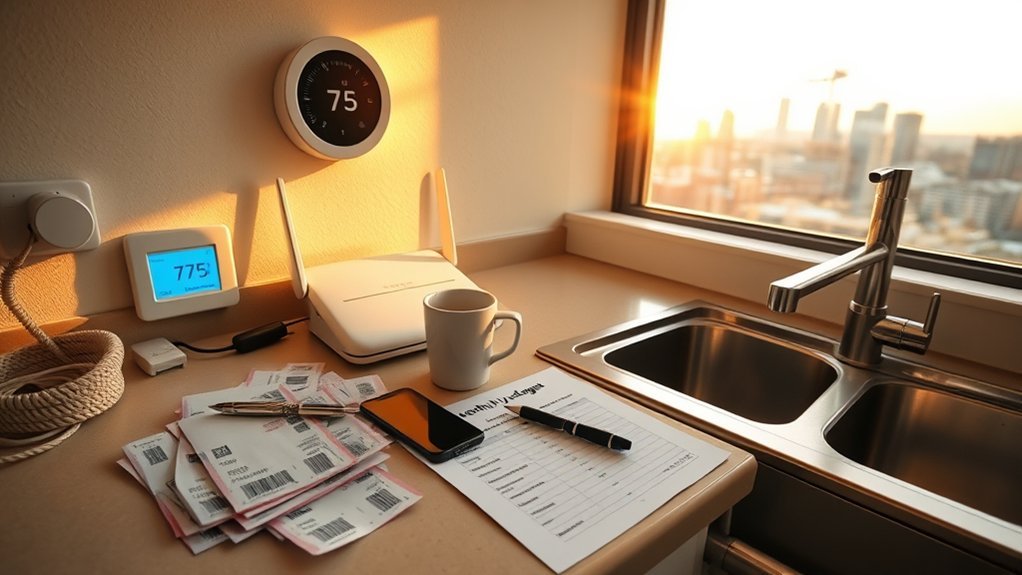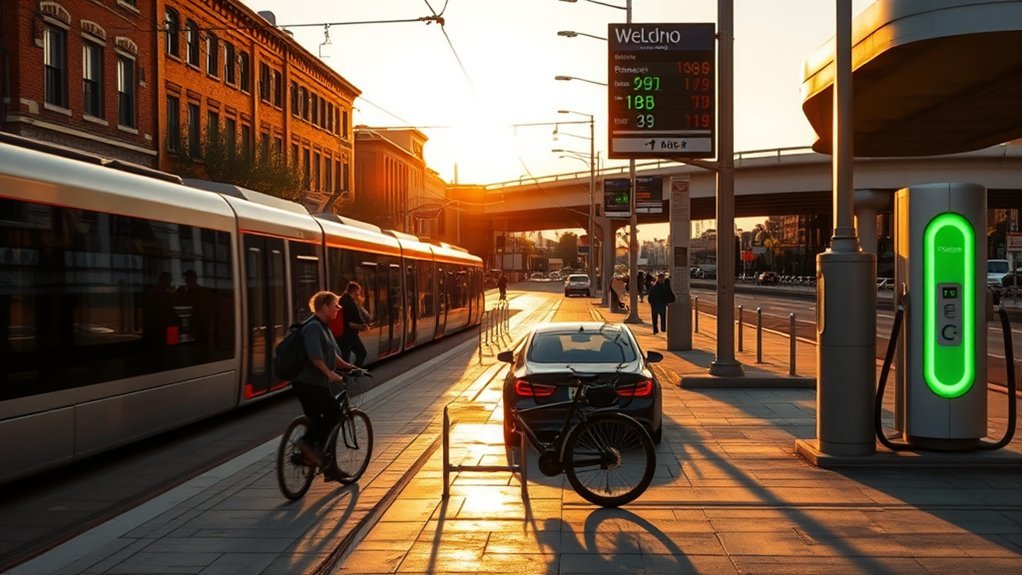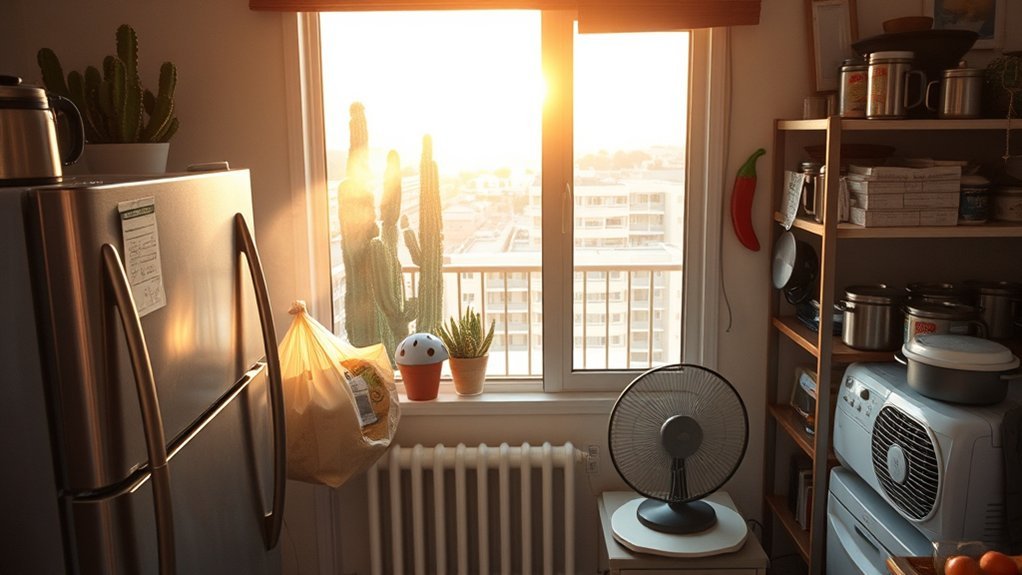San Antonio is still easier on the wallet than many large U.S. cities. Prices vary by neighborhood and lifestyle, but up-to-date data below will help you plan a realistic monthly budget.
Monthly Budget Breakdown for Singles and Families

Although costs vary by household size, recent estimates suggest the following typical monthly expenses (after-tax spending) in Bexar County:
- Single adult: ≈ $3,135/month (annual necessities ~$37,620).[1]
- Family of four (2 adults working, 2 children): ≈ $7,537/month (annual necessities ~$90,443).[1]
As of 2025, a single adult’s typical expenses are about $3,135/month; a two-working-adult family with two children spends about $7,537/month in San Antonio (Bexar County).
You’ll build a practical monthly budget by breaking costs into housing, groceries, utilities, transportation, healthcare, and other essentials. For housing, note that 1-bedroom rents currently average roughly $955–$1,081 across common data sources, and the overall citywide average (all sizes combined) is about $1,295—so set your rent line realistically rather than assuming large savings everywhere.[2][3]
Groceries & internet/mobile: MIT’s 2025 budget for a single adult in Bexar County allocates about $305/month for food and roughly $120/month for internet & mobile service (combined).[1] Utilities (electric, water/sewer) depend heavily on usage and housing type—see details below.
For different family profiles, MIT’s benchmarks also show that households with more children spend proportionally more per month (e.g., ~$9,006/month for two working adults with three kids).[1] Use these data points to allocate percentages of income to fixed versus variable expenses, then refine your monthly budget to match your household’s actual spending patterns.
Housing Costs: Renting vs. Buying in San Antonio

You’ll weigh current rents—with typical 1-bedroom apartments around $955–$1,081 and HUD’s median (50th percentile) small-area 1-bedroom benchmark around $1,326—against homeownership where the typical home value in the city is roughly $251K (vs. ~$364K nationally).[2][3][4][5][6] Mortgage rates have eased into the mid-6% range in late September 2025, which helps but still keeps monthly payments sensitive to taxes and insurance.[7]
Market note: After a big post-pandemic building wave, new apartment permitting slowed in 2025, which may gradually tighten renter leverage even as some local rents cooled earlier in the year.[14][13]
Rent vs. Mortgage Tradeoffs
When deciding whether to rent or buy in San Antonio, weigh the near-term affordability of renting—about $955–$1,081/month for a typical 1-bedroom—against the long-term equity of buying, where a ~$251K home at a ~6.3% 30-year fixed rate plus taxes/insurance can still outpace a comparable rent in some neighborhoods.[2][5][7]
You’ll find housing costs lower than the national norm largely because home values are lower than U.S. typical values, not because financing costs are unusually cheap. Renting lowers upfront costs and offers flexibility; buying builds equity but adds interest, taxes, insurance, and maintenance.
- Lower upfront cost: security deposit vs. down payment & closing costs.
- Predictability: fixed lease term vs. variable ownership costs (taxes/HOA/repairs).
- Equity: none as renter vs. principal paydown as homeowner.
- Flexibility: renting is easier for job changes or neighborhood sampling.
Neighborhood Price Differences
Neighborhoods vary widely by amenities, schools, and commute times. Expect 1-bedroom asking rents to cluster around $955–$1,081 on average (with cheaper and pricier pockets), while home values average near $251K citywide.[2][5] HUD’s Small Area FMRs also show notable ZIP-level differences—use them as another data point if you want a ZIP-specific benchmark.[4]
Utilities, Internet, and Phone Expenses

Overall living costs are helped by slightly lower regional price levels, but utilities depend on usage and home size:
- Electricity: CPS Energy lists an average energy rate of about 12.4¢/kWh (energy portion; total bills include base, fuel, and riders). A 1,000 kWh month would put the energy component near $124 before other charges.[8]
- Water & sewer: SAWS kept base rates steady for 2025; drought surcharges can apply in advanced stages depending on city rules and usage.[9]
- Internet & mobile: MIT’s local budget allocates about $120/month for combined internet and mobile service for a single adult, a useful planning baseline.[1]
Tip: Shop providers and plans annually; promos and speed tiers change total costs. Smart thermostats, leak detection, and shade/insulation can meaningfully reduce monthly utility spend.
Grocery and Dining Costs

San Antonio’s overall price level is modestly below the U.S. average, which helps grocery budgets too.[12] MIT’s 2025 Bexar County budget sets a practical baseline of roughly $305/month per adult for food at home.[1] Dining out regularly will raise your monthly food total above that grocery baseline.
Grocery Price Breakdown
Rather than chasing item-by-item prices that swing weekly, plan with a $305/month per-adult baseline and adjust for dietary needs, household size, and warehouse-club habits. This typically beats frequent restaurant meals on total cost.[1]
- Shop smart: use store brands, weekly ads, and bulk buys for staples.
- Mix stores: warehouse clubs + discount grocers + farmers’ markets.
- Cook ahead: batch meals lower per-serving costs and cut food waste.
- Track monthly: compare your actual spend to the $305 baseline and tweak.
Eating Out Costs
Eating out several times a week will lift your monthly food bill well above a home-cooking baseline. Mix home cooking with targeted dining: budget a set number of restaurant meals, choose value-focused neighborhoods, and track per-meal spend to keep totals predictable.
Healthcare and Insurance Outlays

Plan carefully for premiums and out-of-pocket care. MIT’s 2025 local budget sets medical costs for a single adult around $249/month (annual ~$2,987) and higher for families, which is a practical starting point if you’re estimating typical out-of-pocket spending.[1]
- Include premiums in your monthly fixed costs to avoid surprises.
- Estimate routine care (primary, dental, vision) and meds; set a small monthly buffer.
- Use in-network providers and generic prescriptions where possible.
- Fund an HSA/FSA if available to reduce after-tax costs.
Transportation and Commuting Expenses

Driving is the dominant mode in San Antonio, but you have options:
- Gas prices: Texas averages hovered roughly $2.70–$3.13/gal in late September 2025; local stations vary by area and day.[11]
- Public transit (VIA): 31-Day Pass $38, 7-Day Pass $12, with discounts for eligible riders—useful if you commute by bus.[10]
- Ownership costs: budget for insurance, registration, parking, and maintenance; neighborhood walkability can reduce total miles and costs.
When planning your cost of living, compare a predictable transit pass to variable driving costs, and factor occasional rideshare trips. Living closer to work/school can be the biggest saver.
Goods, Services, and Entertainment Costs

San Antonio’s regional price level sits a few percent below U.S. average, which generally helps with day-to-day goods and services (haircuts, clothing, entertainment).[12] You’ll still see wide spreads by venue and neighborhood—use free/low-cost community events and memberships to keep discretionary spending predictable.
How Much Salary You Need to Live Comfortably

There’s no single definition of “comfortable,” but a common approach is to cover necessities, keep debt low, and save consistently (e.g., 50/30/20 as a rough rule). Using current budgets:
- Single renter: with typical expenses around $3,135/month, a pre-tax income near $55K–$65K often gives room for savings—more if your rent is above the ~$955–$1,081 1-bedroom range.[1][2][3]
- Family with two working adults & two children: plan around $7,537/month in expenses and set gross-income targets accordingly.[1]
If you rent, benchmark against local 1-bedroom rent ranges and your desired neighborhood. If you buy, model total monthly costs (principal & interest at ~6.3% today, plus taxes, insurance, HOA) using a realistic home value (local typical ~$251K; U.S. typical ~$364K).[5][6][7]
Practical Money-Saving Tips for New Residents

If you’re moving to San Antonio and want to keep costs down, start with housing and everyday expenses where the biggest savings are.
- Compare neighborhoods and listings to find rents in the $955–$1,081 1-bedroom range; use HUD’s ZIP-level SAFMRs for additional benchmarks.[2][4]
- Shop local farmers’ markets and discount grocers; a single adult’s food-at-home baseline is about $305/month.[1]
- Enroll in energy-saver programs and watch usage; CPS Energy’s average rate is about 12.4¢/kWh before other line items.[8]
- Leverage VIA: a $38 monthly pass can beat variable driving costs if you ride regularly.[10]
Frequently Asked Questions
What Is the Average Cost of Living in San Antonio per Month?
There isn’t a single “average,” but as a planning baseline in 2025: a single adult in Bexar County spends about $3,135/month on necessities, while a two-working-adult family with two kids spends about $7,537/month (both exclude savings/debt payoff).[1]
How Much Do You Need to Live Comfortably in San Antonio, Texas?
For many single renters, $55K–$65K gross can cover typical expenses (~$3,135/mo) and leave room to save, but your target should adjust for rent, debts, and goals. Families should scale up from the ~$7,537/mo expense baseline.[1][2][3]
How Much Should Monthly Rent Cost?
As of fall 2025, a typical 1-bedroom asks around $955–$1,081 citywide, while HUD’s ZIP-level medians (SAFMRs) often land near $1,326 for a 1-bedroom depending on area. Use ~30% of gross income as a common rent cap and adjust for your debts and savings rate.[2][4]
What Is the Average Cost of Living per Month in Texas?
Texas is large and varied—Houston, Austin, and the Valley differ a lot. Use county-specific budgets (e.g., Bexar County for San Antonio) and local rents as your anchor rather than a single statewide number. Price levels in San Antonio’s metro are a few percent below U.S. average.[12]
Conclusion
Think of San Antonio as a pocket-friendly compass guiding your budget: with about $3,135 monthly for a single and roughly $7,537 for a family of four (two working adults), you’ll find 1-bedroom rents near $955–$1,081, internet/mobile around $120, and a price level a bit below the U.S. average. Use these updated data points to plan salary needs, compare renting vs. buying, and trim costs on utilities, transport, and entertainment. Stay practical, track spending, and you’ll live comfortably—without surprises.
References
- MIT Living Wage Calculator — Bexar County, TX (updated Feb 10, 2025). https://livingwage.mit.edu/counties/48029
- Apartments.com — Average Rent in San Antonio, TX (as of Sep 2025). https://www.apartments.com/rent-market-trends/san-antonio-tx/
- RentCafe — Average Rent in San Antonio, TX (2025). https://www.rentcafe.com/average-rent-market-trends/us/tx/bexar-county/san-antonio/
- HUD Small Area FMRs — Bexar County, TX (2025 summary). https://www.ushousingdata.com/fair-market-rents/bexar-county-tx
- Zillow — San Antonio, TX Housing Market (typical home value ≈ $250–256K, accessed Sep/Oct 2025). https://www.zillow.com/home-values/6915/san-antonio-tx/
- Zillow — United States Typical Home Value (≈ $363K, accessed Sep 2025). https://www.zillow.com/home-values/102001/united-states/
- Freddie Mac PMMS — 30-Year Fixed Rate (6.26% on Sept 18, 2025). https://www.freddiemac.com/pmms
- CPS Energy — Average cost per kWh (energy rate). https://www.cpsenergy.com/en/customer-support/faqs/account-billing/what-is-the-cost-per-kwh.html
- SAWS — Adopted budget keeps water, sewer rates steady for 2025. https://www.saws.org/adopted-budget-keeps-water-sewer-rates-steady-for-2025/
- VIA Metropolitan Transit — Fares (31-Day $38; 7-Day $12). https://www.viainfo.net/guide/fares/
- AAA — State Gas Price Averages: Texas (late Sep 2025). https://gasprices.aaa.com/state-gas-price-averages/
- U.S. Bureau of Economic Analysis — Regional Price Parities (San Antonio–New Braunfels, TX). https://apps.bea.gov/regional/price-parities/
- San Antonio Express-News — San Antonio median rents trend (May 2025). https://www.expressnews.com/lifestyle/article/rent-costs-san-antonio-national-inflation-20388661.php
- Axios San Antonio — Developers pull back on new apartment projects (Jun 11, 2025). https://www.axios.com/local/san-antonio/2025/06/11/apartment-building-slows-san-antonio-texas


